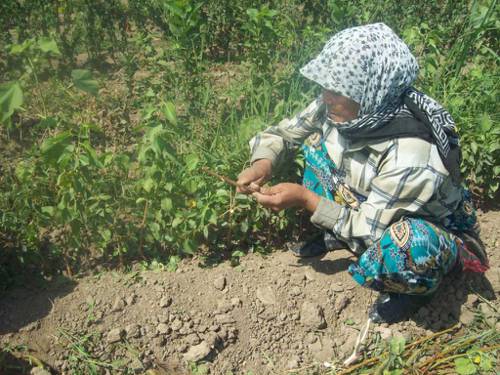
FAQ About Indoor Plant Grafting Techniques

What is indoor plant grafting?
Indoor plant grafting is a horticultural technique where tissues from one plant are inserted into those of another so that the two sets of vascular tissues may join together. This technique is often used to create hybrids, improve disease resistance, or propagate specific traits in houseplants.

Why is grafting used for indoor plants?
Grafting is used for indoor plants to merge desired traits from two different plants into a single plant. This can include creating hybrids with unique characteristics, enhancing resistance to diseases and pests, or improving the aesthetic appeal of indoor plants. Additionally, grafting allows for more efficient propagation of rare or difficult-to-root species.

What are the basic types of grafting techniques used for indoor plants?
There are several grafting techniques used for indoor plants, including cleft grafting, whip grafting, side grafting, and budding. Cleft grafting involves making a cleft in the rootstock and inserting a scion. Whip grafting involves cutting both the scion and rootstock with matching diagonal slits. Budding grafting involves inserting a bud from one plant into the rootstock of another.

Is grafting suitable for all types of indoor plants?
No, grafting is not suitable for all types of indoor plants. Generally, successful grafting requires compatibility between the scion and rootstock, which means they typically need to be closely related species. Some plants are more amenable to grafting due to their vascular structure and growth habits.

What is the most common grafting method for indoor plants?
Cleft grafting and budding are among the most common grafting methods used for indoor plants. Each technique offers different advantages and is chosen based on the specific requirements of the plants being grafted.

Can grafting improve the growth rate of indoor plants?
Yes, grafting can potentially improve the growth rate of indoor plants by combining a rootstock known for vigorous growth with a scion that has desirable traits, such as flowers or fruits, that might naturally grow more slowly.

How can grafting increase disease resistance in indoor plants?
Grafting can increase disease resistance in indoor plants by using rootstock that is resistant to certain soil-borne diseases, thereby protecting the less resistant scion and allowing it to thrive in conditions that would otherwise be detrimental.

What are some challenges associated with grafting indoor plants?
Challenges associated with grafting indoor plants include ensuring proper compatibility between the scion and rootstock, maintaining cleanliness to prevent infections, and providing the right environmental conditions for the graft to heal, such as adequate humidity and temperature control.

How can I tell if a grafted indoor plant has been successful?
Success in indoor plant grafting is indicated by the formation of a strong union between the scion and rootstock, as evidenced by new growth emerging from the scion. In contrast, failure is generally marked by wilting or dryness at the graft site.

Do I need special tools to graft indoor plants?
While special grafting tools are available, basic grafting can be performed using simple tools like a clean, sharp knife or grafting shears, grafting tape or wax to secure the graft, and sometimes a budding knife for certain techniques. The focus should be on the tool's cleanliness and sharpness to ensure successful grafting.

How long does it take for a graft to heal on an indoor plant?
The healing or "take" time for a grafted indoor plant varies depending on the type of plant and environmental conditions but generally takes between 2 to 8 weeks for the graft union to establish fully. Maintaining appropriate humidity and temperature is crucial during this period.

Can beginners successfully graft indoor plants?
Yes, beginners can successfully graft indoor plants with adequate research and preparation. Starting with simpler grafting methods, such as cleft or whip grafting on easier plant species, can enhance the likelihood of success. Practice and patience are key components when learning grafting techniques.

What are some popular indoor plants that can be grafted?
Popular indoor plants that are commonly grafted include cacti and succulents, such as the Hylocereus (Dragon Fruit) and Schlumbergera (Christmas Cactus), as well as some flowering and fruit-bearing houseplants like citrus varieties and roses.

Are there any specific seasons or times best for grafting indoor plants?
While indoor plants can potentially be grafted any time of the year due to controlled environments, grafting is often more successful in the spring and early summer, coinciding with the plant's natural growth cycle and tissue activity.

How should I care for a grafted indoor plant?
Care for a grafted indoor plant involves maintaining adequate humidity and temperature, ensuring proper watering and nutrient supply, and monitoring for signs of stress or disease. The grafts should also be checked regularly to ensure they remain securely in place without damage.

Can grafting be used to create multi-fruited indoor plants?
Yes, grafting can be used to create multi-fruited indoor plants, where different types of fruit or flower-bearing scions are grafted onto a single rootstock, resulting in a plant that produces several types of fruits or flowers. This is particularly common with citrus trees.

What role does rootstock play in plant grafting?
The rootstock in plant grafting provides the root system and support for the grafting process. The choice of rootstock influences not only growth and disease resistance but also compatibility with the scion. A strong, healthy rootstock contributes significantly to the success of the graft.

What is a scion in the context of grafting?
A scion is the plant section that is grafted onto the rootstock in grafting techniques. It contains the desired traits, such as flowers, fruits, or foliage properties. Successful grafting depends on the compatibility of the scion with the rootstock.

How do I choose the right scion for grafting?
Choosing the right scion involves selecting a healthy, disease-free section from a plant that possesses desired traits like flowers, fruits, or overall appearance. It should be compatible with the chosen rootstock to ensure successful grafting.

What are some benefits of grafting over traditional propagation methods?
Grafting offers several benefits over traditional propagation methods, including faster production results, the ability to combine the desirable traits of two different plants, increased disease resistance, and the potential to grow plants that are difficult to propagate by conventional means.
